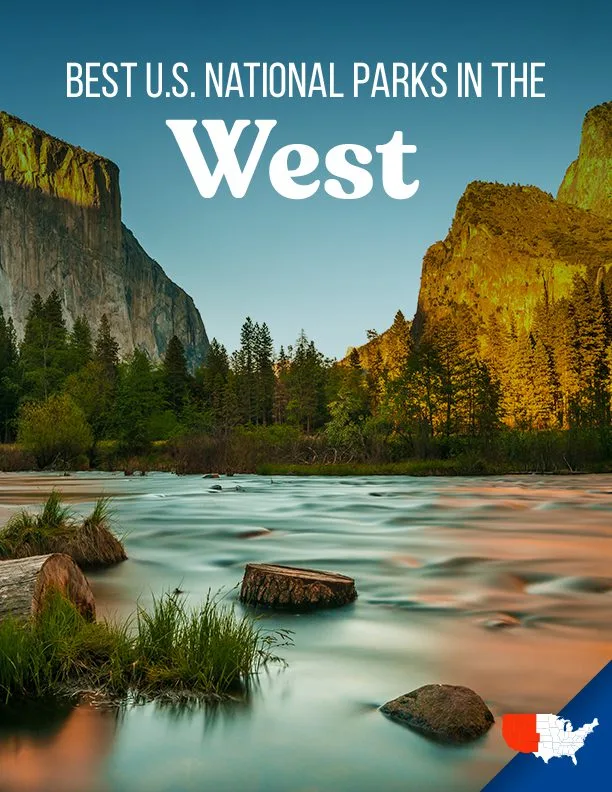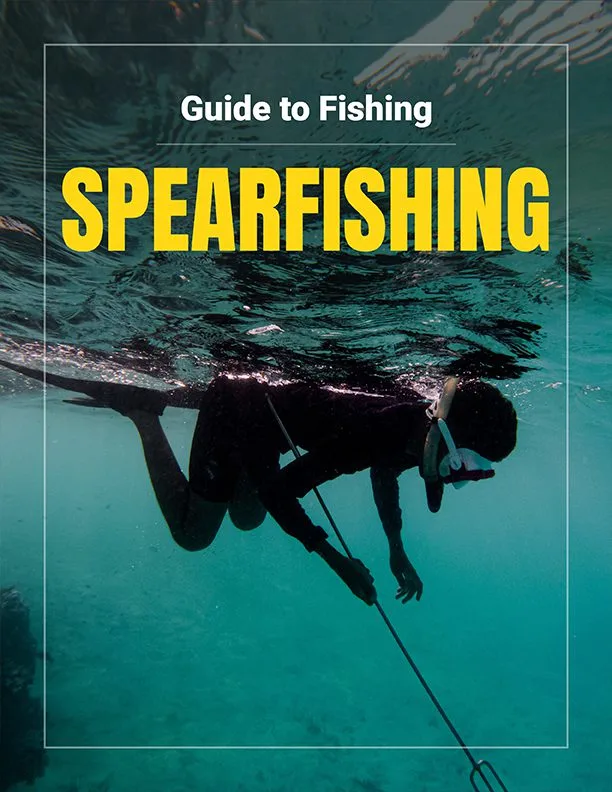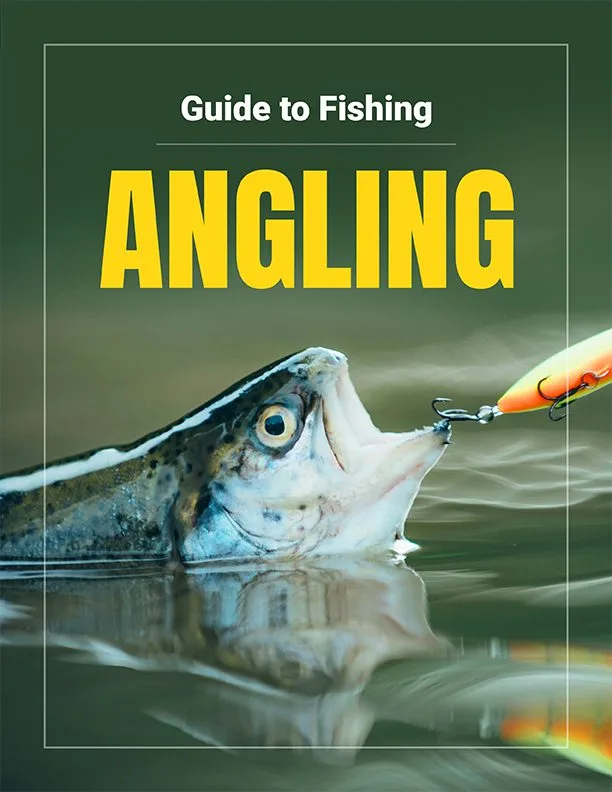Your Free Guide To Fishing: Hand Fishing
Your Free Guide To Fishing: Hand Fishing
We are privately owned and not affiliated with the government in any way or form.

Introduction to Hand Fishing
In every sport, there are certain athletes who enjoy getting back to the basics. These people tend to use minimal equipment, don’t want to spend a boatload of money and thrive on the thrilling contest of human versus fish.
These minimalists or traditionalists just want a chance to go back to the fundamental methods of their preferred sport that their ancestors once used. If any of the above descriptions made your ears perk up, then angling or spearfishing probably won’t excite you. Instead, try your luck with the little-known sport of hand fishing.
Hand fishing is different from handline fishing, which uses a fishing line with a hook (no reel). In hand fishing, it is just your hands, although some hand fishers wear gloves to protect their hands from bites and cuts from sharp fins.
Hand fishing is exactly what its name implies – you use your hands and your natural physical ability to catch fish. Hand fishers don’t carry a rod, spear gun, or net to capture the fish. Instead, they use bait and a fishing line dropped into a body of water. Once a fish grabs the bait, the fishermen pull the catch out of the water with their bare hands. It’s the perfect combination of a bicep workout and an outdoor adventure. In some areas, there is an added thrill of going after fish who will gladly bite before getting dragged out of the water (catfish, we’re looking at you). Who says fishing isn’t a dangerous sport?
Needless to say, hand fishing is not for the faint of heart. Since only certain varieties of hand fishing are legal in specific places, you really must do your research before getting into the sport. While you don’t have to buy lots of highly expensive equipment for hand fishing, there are a few basic tools essential to your hand fishing adventures that will help you succeed.
Once you have your equipment, you probably want to do some practicing and figure out where you’re going for your first hand fishing trip. It isn’t smart to wing it – legal regulations restrict hand fishing in many locations, so you need to do the research ahead of time so that your trip is not in vain and you don’t break the law.
If you’re a bit overwhelmed, don’t worry; we’ve got you covered! You can find all necessary preparations for a hand fishing trip by conducting research and seeking advice from people well-versed in hand fishing. With a little help from those same resources, you can find the best hand fishing equipment and know how much money you’ll need to take part in this sport. After getting the equipment, you can begin learning how to use it and go through a few other essential steps before your first hand fishing trip. Finally, consult those resources to find the best places to go for hand fishing in the U.S. and beyond.
Types of Hand Fishing
Here’s a look at the major hand fishing techniques. Unlike spearfishing or angling, these techniques only apply to certain kinds of fish, not just how you catch them. As you read this list, keep in mind that some of these methods are only legal in certain states or countries.
Hand Fishing From Shore
If you’re using your hands but aren’t wading into or diving under the water, you’re hand fishing from the shore. There are a couple of key techniques that hand fishers use to succeed from the shoreline.
Trout Tickling
Trout tickling, also known as “guddling” in Scotland, involves finding a body of water with many trout living in it. Fishermen who practice this technique lie down near the waterline, preferably on a rock or log just over the water. Then, they place their arm in the water elbow-deep and let it cool down so the trout will take it for a tree branch rather than a potential danger.
When they see a trout come along, trout ticklers (hold the giggles, please) begin stroking the area between its tail and back fins. They then carefully move their hand to its belly, still tickling it, until they reach the gills. They plunge their fingers (thumb and ring finger will do) into the gills and quickly remove it from the water. In the United States, this activity is only legal on private property, so be sure to get permission before tickling any fish in public lakes, rivers, or streams.
Hand Angling
The term “hand angling” refers to a hand fishing technique that lacks an official name. This method is a popular way to catch bass in certain states, including Texas and Alabama. The technique involves standing on a pier with bait of some kind, like minnows, shiners, small bluegill, or even gummy bears.
Hand angling is done by holding the bait in one hand while gradually extending it into the water, sometimes releasing it, and then gently picking it up. When a bass swims by and jumps for the bait, hand anglers stick their thumbs into its mouth, grip it by the jaw and pull the fish out of the water. Keep in mind that bass are big fish, so it takes some real arm strength to get it out of the water. Bass can also bite back, so you will definitely want to wear gloves. Some people also use this technique while standing in the shallows.
Hand Fishing in the Water

If you’re wading into shallow water or diving beneath the surface to catch the fish, then you’re hand fishing in the water. Several fishing methods apply to this technique of hand fishing.
Noodling
Noodling, also known as “hogging” or “grabbling,” is very popular in the southern United States and involves wading into rivers looking for catfish lairs. Catfish live in holes in grassy areas, in logs, and under rocks.
Once a hand fisherman reaches a catfish lair, he or she extends a hand into it, wiggling the fingers like noodles (hence the name) and using them as bait. The fisherman then waits for a catfish to bite at his or her hand. After it bites, the fisherman shoves his or her arm down the fish’s throat, grabs the catfish’s gills, and pulls it out of the water with both hands.
Catfish do not have big teeth, so you won’t lose your hand doing this (although some noodlers do wear gloves). However, there is some risk involved, like an infected bite, loss of a finger, or disturbing an alligator, snapping turtle, or snake.
Also, catfish have venom in their dorsal and pectoral spines, which usually cause mild stings but in some circumstances can result in tissue necrosis. It is important while noodling to stay in shallow water; a large catfish can potentially drown a hand fisher in deep water.
Flounder Tramping
Flounder tramping, legal and popular in some sections of the United Kingdom including Scotland, involves walking into the muddy shallows where flounder bury themselves underneath the mud. When you feel a flounder underneath your feet, step on it quickly, aiming for the main body region rather than the fins or head.
Once you’re standing on the fish’s midsection, reach down and quickly pick it up by the gills. While some places allow you to bring a leister (a three-pronged spear) and spear the fish after you’ve stepped onto it, this obviously creates more damage and can be problematic if you catch the wrong fish. Therefore, using a leister is illegal in many areas. Be sure to research some of the local regulations before you travel.
Gear You’ll Need for Hand Fishing

Since hand fishing involves fishing with your hands (surprising, right?), it tends to require the least amount of equipment. Hopefully, you have at least two working hands. However, depending on the type of hand fishing you’re going to perform, you may be inclined to purchase some helpful gear. These minimal tools give you just enough aid to successfully catch the fish of your dreams. Before you start, read about some of the basics you’ll need.
Buy the Right Bait
While you don’t necessarily need bait for most types of hand fishing, you’re going to need it if you’re fishing for bass. Depending on the body of water you fish and your personal preferences, you’ll likely need to buy different types of bass bait. It may help to ask locals which kind of bait they find works the best before you go.
Gummy worms (yes, the candy ones) are a popular option. You can buy them at any gas station or corner store for as little as $5, although bigger bags often cost around $20. You can also try using smaller fish as bait, such as bluegill, shiners (a kind of minnow) or shad. Nightcrawlers (worms) can work well, too.
If you can’t collect bait by fishing, you can try buying preserved fish for between $5 and $10. Buying processed versions of those fish or buying lures that are designed to mimic those fish species are also viable options, and they usually cost about the same as buying preserved fish. Keep in mind that using processed fish as bait could be considered chumming in some areas; local regulations may forbid chumming in certain lakes or rivers.
Buy the Right Equipment for Your Hands
Since most hand fishing techniques involve sticking your hand into the mouths of fish, it’s important to protect yourself. Invest in a good set of gloves, such as fishing gloves made by Glacier Glove or Rapala. These typically cost between $20 and $50, although you can get some alternative models on Amazon for as little as $6.
If you’re going flounder tramping, you may be allowed to carry a three-pronged spear. Leisters are commonly used by spearfishers (or “spearos”) for gigging purposes. A fully assembled leister (such as one made by Lakco or Danielson) can cost around $60 to $70. However, if you’re handy with tools, you can always make your own from a wooden pole and a quality spearhead (such as one made by B&M or Danielson) for anywhere from $5 to $20.
You’ll also need something to carry your catch after you extract it from the water, such as a stringer, which usually costs roughly $15. You could use a cooler, which can cost as little as $8 for a styrofoam model at Walmart or as much as $300 for a medium-sized Yeti cooler.
It’s also a good idea to bring a hunting knife for situations where you have to cut something. A good quality hunting knife (such as one made by Havalan or Buck Knives) can cost you as little as $50, although many people will pay $100 or more for an elite product.
Invest in Some Water Shoes
Water shoes protect your feet from sharp rocks and shells and give you traction, both while in the water and when getting out on muddy shores. They also shield your toes from being stubbed, cut, or having toenails ripped off. This is especially important when hand fishing, since you might be thrown a bit off balance once you grab a fish that is thrashing around.
Keen and Teva both make high quality water shoes, which can be purchased at sporting goods stores or outdoor outfitters for between $60 and $130. Or, you could go with budget water shoes from Walmart, which will only set you back about $6.
Don’t Forget Medical Supplies
An emergency can happen at any given moment. It’s important to have some basic medical supplies on hand when you go fishing. Hand fishing can be dangerous, especially if you’re interested in methods where your hand is at the mercy of a toothy fish.
Remember to bring a first aid kit (which you can buy for as little as $7 on Amazon) and some bandages or ointments to cover any cuts you get on your hands or feet. A solid first aid kit should also include a supply of water, sunscreen, protein bars, and a flare in case you get lost in your fishing location.
How to Prepare for Hand Fishing
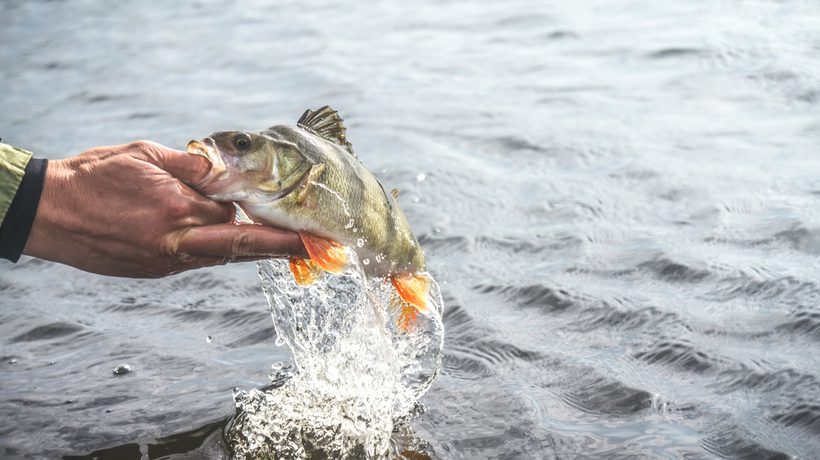
Once you’ve settled on a method of hand fishing and collected all the necessary gear, it’s time to start preparing.
Step 1: Find Other Hand Fishers
Oftentimes, you can learn the most about a sport by talking to experienced athletes. Since hand fishing is illegal in many places and tends to be a rural activity, it’s a bit harder to find experienced hand fishers than it is to find anglers or spearfishers. However, if you look hard enough, you just might come across some knowledgeable individuals who can help you prepare for your hand fishing adventure.
Some of the groups you can consult or join include:
- Noodlers Anonymous (a group that advocates noodling)
- Okie Noodling
- Catfish Grabblers
- World Flounder Tramping Championships
You can also try contacting people who have talked about hand fishing in online forums. You can find online forums about hand fishing on various sites, including:
- Tapatalk
- Sciencechatforum.com
- NWHikers.net
Likewise, try looking up or searching for people who have written blogs or published books about hand fishing. When you find their contact information, reach out and explain your interest in the sport. After that, look for Facebook groups and other social media communities where hand fishers meet and talk about the activity.
Step 2: Practice Using Your Gear
Since you don’t have to carry a reel or rod, there isn’t a lot of gear you’ll need for hand fishing. However, there are a few things that can make your life a bit easier, so be sure to become familiar with them.
If you’re going to carry bait in your hand, buy some and get used to handling and storing it. This is particularly important if you’re using live bait, such as minnows or nightcrawlers, where you have to store them in certain conditions before you venture out on your fishing trip.
If you plan to wear gloves or waterproof shoes when you fish, wear them until you get used to them. This is particularly true if you are wearing shoes, because (as many people who spend lots of time outdoors will tell you), it’s important to “break your shoes in” before your trip so you aren’t stuck wearing something uncomfortable when you arrive. If you have to, alter your gloves or boots by adjusting the straps and closures so that they are more comfortable.
Step 3: Find Places to Practice
Nothing prepares you for fishing like getting out there and doing it. Look up local bodies of water where you can try hand fishing and get to work. Depending on where you live, you may not be allowed to go hand fishing on public lands.
Start by getting the fishing regulations for the state where you want to fish. If hand fishing is not allowed at all, the regulations will say that; if it is allowed, the regulations will advise where it is permissible. If hand fishing on public land is not allowed, you can connect through social media groups or organizations (see the section above) to find someone who has private land with a river, creek or lake and is willing to show you the ropes.
Step 4: Look for Web Tutorials
In the event that you cannot find anywhere to go hand fishing in your area, you may have to settle for watching tutorials until you are able to travel to a place where you can hand fish. YouTube has many channels dedicated to hand fishing videos, as well as standalone videos showing unusual catches.
You may also be able to contact some of these YouTube users and get their advice about hand fishing. Conduct a quick Google search to find additional hand fishing videos posted on other sites.
Step 5: Research Local Regulations
Hand fishing is not permitted in certain states, counties, bodies of water, or countries. Some may only allow certain types of hand fishing and have strict regulations on other techniques.
Once you’ve located an ideal fishing location or know a general area that you’d like to try, research the local fishing regulations. Pay close attention to details, including the following:
- Whether the area practices “catch and release” or allows you to keep the fish
- The permitted types of hand fishing techniques
- The permitted times of day or year you’re allowed to hand fish
- Whether you need to acquire a state fishing license and how to do so
- The kinds of fish you can catch using hand fishing methods
Top 5 Hand Fishing Locations in the U.S.
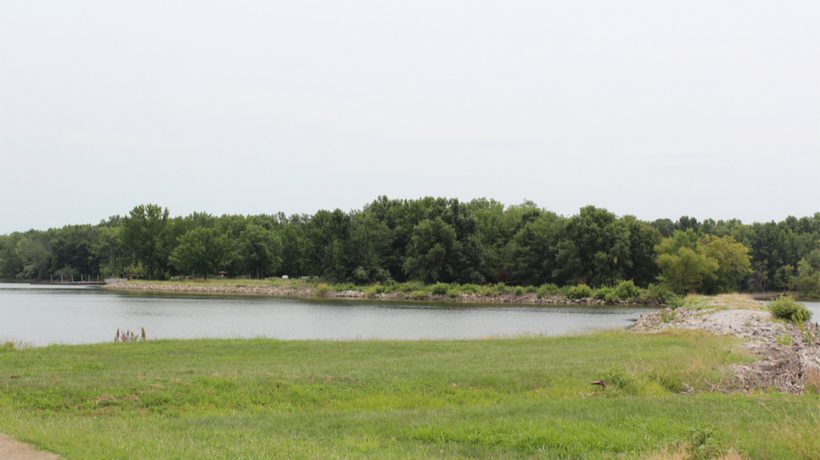
The following list contains some of the most popular hand fishing locations in the United States. Because many great fishing locations are often situated in towns with multiple fishing spots around them, this list mostly mentions towns rather than individual bodies of water. Also, keep in mind that you’ll likely need to get a sport fishing license and follow some other regulations when you go hand fishing in one of these locations.
Paul’s Valley, Oklahoma
Located near the center of Oklahoma, Paul’s Valley is a great spot to try noodling. Considered to be a noodling hotspot among the locals, catfish are the most popular catches. If you pair your noodling trip with other kinds of fishing, you can check the local rivers for crappie, bass and walleye. Experienced hand fishers recommend noodling in Wacker Park, where the annual Okie Noodling Tournament, one of the biggest noodling contests in the United States, takes place. You can also try your luck in Paul’s Valley Lake.
If you come during the summer season, you can experience annual events such as the Heritage Days Rodeo in June or the Valley Rally Bicycle Tour in May. Paul’s Valley also has plenty of great lodging options, from luxurious places such as Echo Canyon Spa Resort or the Manor Bed & Breakfast to more affordable options such as Rodeway Inn or Four Sands Motel. If you’d rather go camping during your stay, set up a tent at locations like RC’s Campground & Quick Stop or Paul’s Valley City Lake.
Gas up your RV and set out to themed locations like Wild Horse RV Park or Arbuckle RV Resort. You can pack your schedule full of fun activities offered in Paul’s Valley. See a show at the Royal Twin Theater, take a stroll through Wacker Park or even visit the Toy & Action Figure Museum. You can also see plenty of local landmarks such as the Santa Fe Depot, the Toy & Action Figure Museum. If you get hungry, grab a bite at the iconic Jingle and Jangles restaurant or a sweet treat at the Field’s Pie Factory.
Rend Lake, Illinois
On the southern side of Illinois sits Rend Lake, an ideal spot for noodling and hand angling. Channel and flathead catfish as well as largemouth bass are the most popular catches, though you can also hand fish for white bass, striped bass, crappie and bluegill.
Angling for the same fish species is another popular activity on Rend Lake, so be sure to give anglers space to do their own fishing. Popular fishing spots for hand fishers include just north of the Rend Lake Dam and Visitor Center, the shallows south of the Rend Lake Marina and to the west of the North Sandusky Boat Ramp.
If you come during the peak season, you can also experience annual events such as the Illinois Wine and Art Festival in September or the Rend Lake Water Festival in May. The cities around Rend Lake (particularly Mount Vernon) provide plenty of great lodging options, from more upscale places like Fairfield Inn & Suites Mount Vernon Rend Lake or Lake Cove Hotel to more affordable options such as Southgate Inn or Royal Inn. If you’d rather go camping during your stay, set up a tent or RV at locations like North Sandusky Campground, Wayne Fitzgerrell State Park or Gun Creek Campground.
Pencil in some other activities to your schedule, like swimming or boating on the beaches, riding horses at Wayne Fitzgerrell State Park or exploring various hiking trails. For more land activities, drop by Mount Vernon to see the Cedarhurst Center of the Arts, play a round at Green Hills Golf Club or browse the aisles of King City Books. You can also see great landmarks such as the Appellate Courthouse or Jefferson County Historical Village.
Sweetwater, Tennessee
Located on Tennessee’s eastern side in Sweetwater Valley, the town of Sweetwater is another great spot for noodling. In addition to catching catfish (on your own or with help from Big Tennessee Catfish Noodling Tours), you can also go angling.
You can check out various streams and rivers to catch crappie, brown trout, muskellunge (muskie for short), smallmouth bass, walleye, largemouth bass and other fish species. Experienced hand fishers don’t seem to be giving away the secret of the best hand fishing locations, so be sure to ask the locals or employees of Big Tennessee Catfish Noodling Tours for suggestions.
Plan your visit in accordance with one of the many annual events, such as the National Muscadine Festival in September. Sweetwater also has plenty of great lodging options, from comfortable places like Hilltop Hotel & Conference Center to more affordable options such as Rodeway Inn or Guest Inn. Campers can set up a tent or RV at Sweetwater Valley KOA or nearby locations such as Tennessee Country Campground & RV Park or Notchy Creek Campground.
There is plenty to do in Sweetwater when you are done fishing. The town is filled with quaint and nostalgic shops and friendly faces. Other shopping destinations in Sweetwater include the famous Sweetwater Flea Market and Bobby Todd Antiques. You can also visit the Redneck Resort Mud Park, take a tour of Sweetwater Cheese Farm or Mayfield Dairy Farms and have dinner at Bud’s Tavern. You can also see local landmarks such as the Lost Sea in Craighead Caverns, the largest underground lake in America.
South Fork, Colorado
Picturesquely situated inside the famed San Luis Valley, South Fork is an isolated town and a good spot for trout tickling. The headwaters of the Rio Grande are here and abound with rainbow and brown trout. Try hand fishing on the banks of the Rio Grande itself or in its many tributaries.
South Fork is home to a large stretch of Gold Metal Waters, where you can also go angling for trout and kokanee salmon. Experienced hand fishers recommend heading to nearby Crater Lake, but you can catch decent trout in many water bodies in the San Luis Valley.
While you are there, experience some of the great annual events during your visit, such as the Loggers Day Festival in July or South Fork Winterfest in December. South Fork also has plenty of high end lodging options, such as Spruce Lodge or Alpine Accents. For a more affordable stay, check into Allington Inn & Suites or Foothills Lodge & Cabins. If you’d rather go camping during your stay, pitch your tent at locations such as Alpine Trails RV Park or Cottonwood Cove Lodge.
In addition to fishing, South Fork has other great outdoor activities. Hike along trails connecting to the Continental Divide Trail, go backpacking through the Weminuche Wilderness, go horseback riding at Cottonwood Cove Lodge’s ranch or visit the spectacular waterfall at North Clear Creek Falls. If you don’t mind traveling a little outside of South Fork, you can see some great local landmarks, such as Historic Windsor Hotel in Del Norte or the Bachelor Loop Historic and Scenic Byway in Creede.
Leesburg, Alabama
Located in the northeastern section of Alabama, Leesburg is the perfect place for noodling and hand angling. Catfish and bass swim plentifully in Weiss Lake and in the rivers and streams, as do crappie, bluegill, bream and other fish species. Since Alabama laws allow you to hand fish for game and nongame fish, you can catch any of these by hand (but be sure to check each body of water’s regulations about whether you have to release the fish).
Many famous hand fishers enjoy Weiss Lake, one of the best fishing spots out of the many streams, rivers and other bodies of water in the area. Leesburg hosts fishing tournaments throughout the spring, beginning with the Crappie USA Tournament in March, followed by the Alabama Bass Federation and Alabama Bass Trail in April and the Fishers of Men Classic Series in May.
If you visit during the right season, you can catch one of the annual events happening across the state, like the Leesburg Day Festival in September or the Trunk or Treat event in October. Leesburg and the surrounding area has plenty of great lodging options for every budget. Luxurious places like the Chestnut Bay Resort or Holiday Inn Express & Suites Fort Payne are available to those looking for comfort. Visitors will find more affordable options in the Secret Bed and Breakfast Lodge or Bay Springs Country Inn & Campground. Campers can set up a tent or park their RV at Weiss Lake RV Park or Cedar Point Campground.
If you’re looking to add other activities to your schedule, consider visiting Cherokee Rock Village, buying artisan products at Orbix Hot Glass or grabbing some grub at Blackstone Pub & Eatery. You might even catch some live music at Fat Dog’s Saloon. If you’ve brought the kids, take them to the Pirate’s Bay water park for some summer fun. Don’t forget to take pictures at one of the many landmarks in Leesburg, like the Cornwall Furnace. Just north of Leesburg is the picturesque Yellow Creek Falls Fish Camp, where you can boat, fish and see the beautiful Yellow Creek Falls waterfall.
Top 3 International Hand Fishing Locations

River Derwent, Tasmania
Running from the center to the southeastern coast of Tasmania, an island off Australia’s southern coast, Derwent River is a great spot for trout tickling. In addition to catching trout, you can angle sections of Derwent River to catch flathead, bream, whitehead, salmon, cod and other fish species. When you catch trout, keep in mind that local regulations require you to release them afterward. Experienced hand fishers recommend the section of Derwent River near the town of Hobart.
Plan your visit during the right season so you can experience some of the most exciting annual events that Tasmania has to offer, such as the Royal Hobart Show in October or the Festival of Music and Art (or simply “MOFO”) in January. Hobart also has plenty of lodging options, from luxurious places such as Grand Chancellor Hotel Hobart or the Henry Jones Art Hotel to more affordable options such as Mayfair on Cavell or Argyle Motor Lodge. If you’re up for some camping during your stay, pitch a tent or park the RV at Orana Campsite or Seven Mile Beach Caravan and Cabin Park.
You’ll never run out of fun activities to add to your visit – Hobart has plenty of great options. Hike Mount Wellington, browse the Farm Gate Market or Salamanca Market or tour Battery Point or the Tasmanian Museum & Art Gallery. For some culture, catch a film and grab some snacks at State Cinema or browse the exhibits at the Museum of Old and New Art (MONA) and then grab a drink at The Winston. If you want to absorb some local history, check out local landmarks such as the Cascades Female Factory Historic Site or Salamanca Place. During the winter, you may even be able to catch sight of migrating Southern Right Whales, Humpback Whales and Minke Whales.
Palnackie, Scotland
Palnackie is located on the southwestern side of Scotland and remains one of the premier locations for flounder tramping. In addition to catching flounder, you can also go angling for trout, carp and other fish species in the area. Remember to leave your leister at home, since local regulations no longer allow you to use one while flounder tramping. If you’re planning to fish competitively, be sure to plan your visit during September, when the World Flounder Tramping Championships take place.
Visiting at other times of the year allows you to be a part of some of the region’s best annual events, like the Dumfries and Galloway Arts Festival in May or Big Burns Night in January. Lodging is abundant in Palnackie; spend a little more for great amenities at places such as the Market Inn Hotel or the Old Station House, or stay within your budget at one of the more affordable options like the Clonyard House Hotel or the Airds Farmhouse Bed and Breakfast. If you’d rather go camping during your stay, visit locations such as Barlochan Caravan Park or Castle Point Caravan and Camping Site.
In addition to fishing, Palnackie has other great activities to help fill your time. Check out the biking trails through Dalbeattie 7stanes trail site or go horseback riding at Lochhill Equestrian Center. The whole family will enjoy walking the Castle Douglas Treasure Trail, visiting the Palnackie Community Shop and touring the Cocoabean Company chocolate factory. For unique finds, tour the Old Mill Gallery and the Palnackie Community Shop and then have a delicious lunch at the Brambles Cafe. History enthusiasts will get their kicks visiting the local landmarks such as Threave Castle or Buittle Castle.
Selale Yaka Park, Turkey
Located on the southwestern shore of Turkey and bordered by mountains, Selale Yaka Park (not to be confused with the nearby location simply called “Yaka Park”) is a great spot for trout tickling. Fish in one of the various streams connected to the nearby trout farm or try your luck in a stream running alongside the Selale Yaka Park and Restaurant. Restaurant staff prepare the fish after you catch them, although you can always take the fish with you and cook them at another location.
If you plan your trip during the right season, you can also experience some of the region’s annual events, such as the Üzümlü Mushroom Festival in April, the Fethiye Culture Festival in May or the Fethiye Classical Music Festival in September. Fethiye, the closest town to Selale Yaka Park, has plenty of great lodging options, from luxurious places such as Ece Saray Marina & Resort and Club Tuana Fethiye to more affordable options such as Hotel Yucel or Villa Daffodil. Campers can choose to set up a tent or RV camp at Aksazlar Camping or Sultan Camp.
If you want to add other activities to your schedule, Fethiye has plenty of great options. You can hang out at Calis Beach or the Beach of Butterfly Valley, take a boat tour to the island of Kızılada, take a Jeep safari tour or go hiking along Lycian Way. You can also see ancient local landmarks, such as the Tomb of Amyntas, the ghost town of Kaleköy or the ruins of Tlos.


